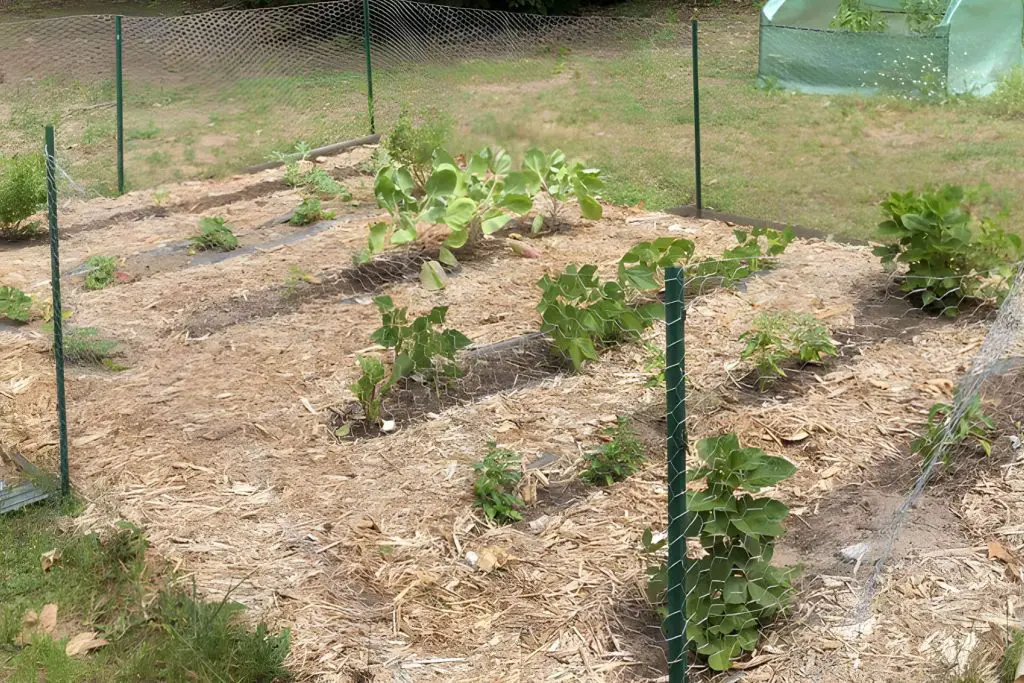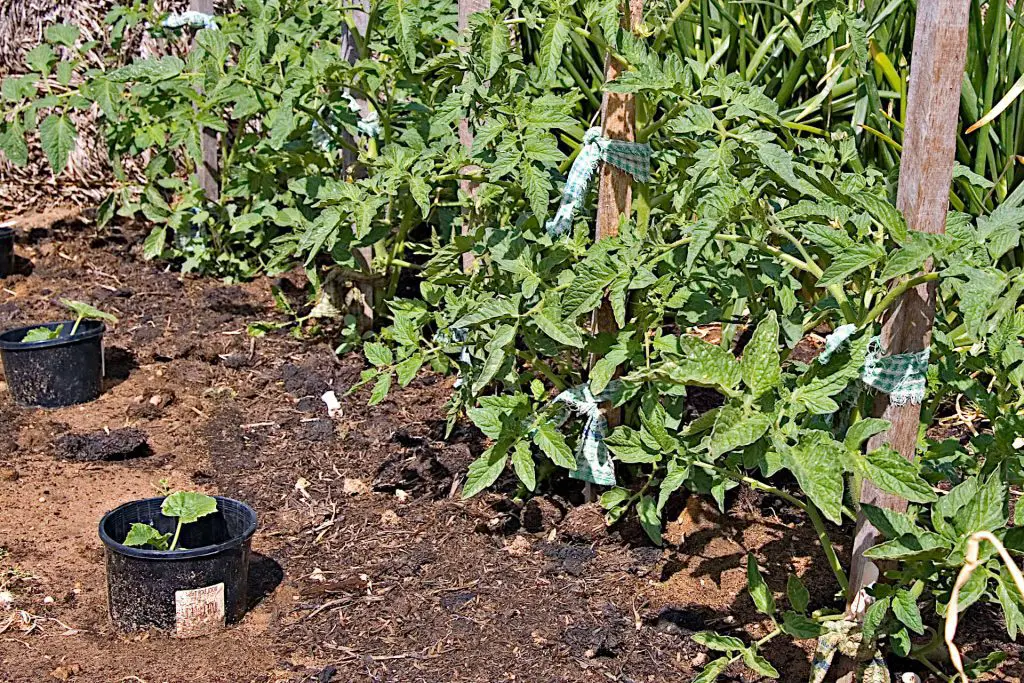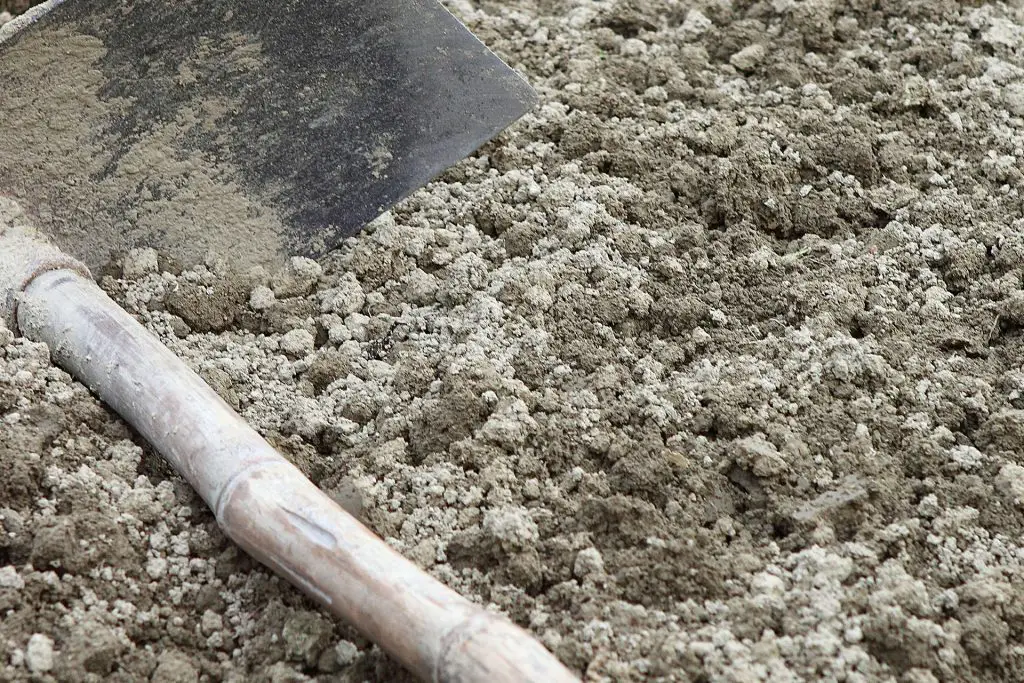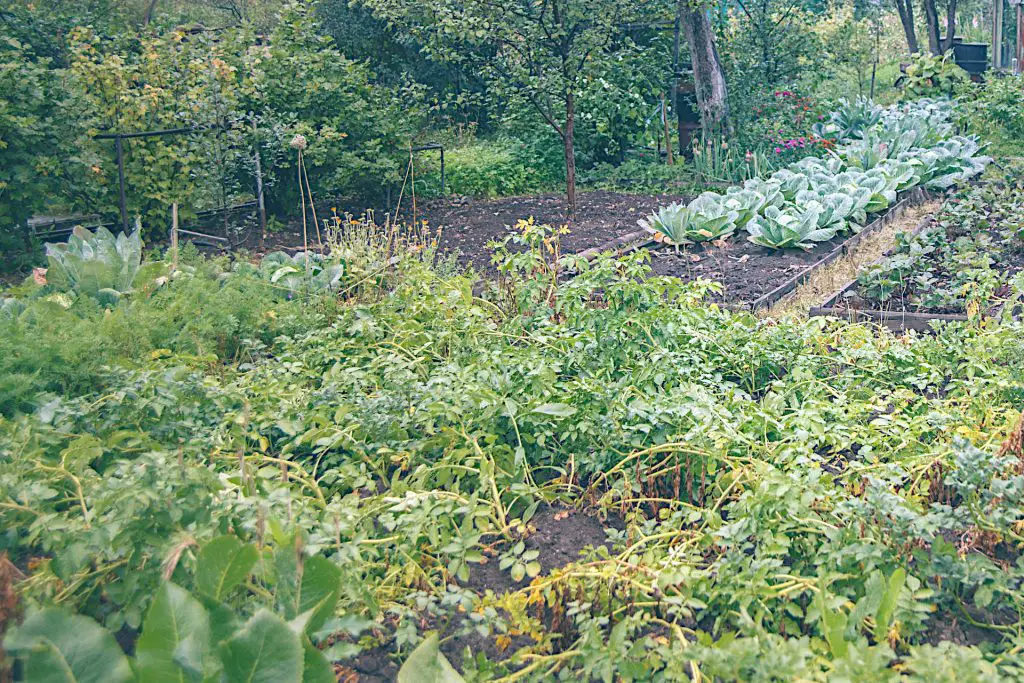Your Guide to Planning a Successful Vegetable Garden – Get a Headstart by Sowing Seeds Indoors
Starting a vegetable garden can be a rewarding and fulfilling experience, but it requires careful planning and preparation to ensure success. From choosing the right location and determining the size of your garden, to selecting the right vegetables to grow and providing the necessary care, many factors must be considered.
This article will provide essential tips and guidance to help you plan your vegetable garden and start sowing seeds indoors confidently. It will also explain that planning also needs an understanding of the vegetable patch in terms of the time involved and ongoing cost as the plants grow through to harvest. It is important to have processes in place to deal with all aspects of caring for the patch after it has been planted.
Whether you are a beginner or an experienced gardener, these tips will help you create a productive and successful growing season. With clear, step-by-step instructions and expert advice, you’ll be well on your way to enjoying a bountiful harvest of fresh and delicious vegetables.
Quick Guide to Planning Your Vegetable Garden

Planning your vegetable garden is an important first step in starting a successful garden. Here are some tips to help you plan your vegetable garden and start sowing seeds indoors:
- Choose a location for your garden: Choose a location that gets plenty of sunlight (at least 6-8 hours of direct sunlight per day) and has well-draining soil.
- Determine the size of your garden: Consider how much space you have available and how much time you have to devote to your garden. A smaller garden is easier to manage, but a larger garden can provide a greater variety of vegetables.
- Make a list of the vegetables you want to grow: Consider your climate, available space, and your personal preferences when choosing which vegetables to grow. Some vegetables, such as tomatoes and peppers, are better suited to being grown in a greenhouse or indoors in the early months.
- Plan your garden layout: Draw a sketch of your garden space and plan where you will plant each type of vegetable. Consider the mature size of the plants and how much space they will need to grow.
- Start sowing seeds indoors: Many vegetables can be started from seed indoors in the early months of the year. Use seed trays or pots filled with seed compost and follow the instructions on the seed packet for sowing and care. Keep the compost moist and provide plenty of light for the seeds to germinate. Once the seedlings are large enough, they can be transplanted into the garden.
By following these steps, you can confidently plan and start your vegetable garden, ensuring a productive and successful growing season.
Our Experience – Common Mistakes
In our experience, we find that two main factors prevent vegetable patches from producing the amount of produce that they expect. These factors are a lack of initial planning and, secondly, failure to rotate the crops i.e., growing the same vegetables in the same place year after year.
The good part is that both of these are easily rectified in subsequent years, and the odd disappointments tend to be a great learning curve in getting the most out of your vegetable garden.
In-depth Look at Planning Your Vegetable Garden
Above, we have provided a quickfire guide to planning your vegetable garden for spring. Of course, a lot more in-depth planning can be done, and below, we expand on some of the concepts to enable you to create a fantastic vegetable patch that will provide an abundance of produce and be fun to maintain.
The Importance of Crop Rotation

Crop rotation is a practice that has been used for centuries by farmers to ensure the health and productivity of their crops. By rotating the crops grown in a specific area yearly, farmers can help prevent the buildup of soil-borne pests and diseases and improve the soil structure and fertility.
Crop rotation helps maintain the soil’s health and ensures that crops continue to grow strong and productive. Additionally, crop rotation can help to reduce the need for chemical inputs, such as pesticides and fertilizers, making it a more environmentally friendly method of agriculture.
How to Prepare Soil for Planting
When planning a vegetable garden, it’s important to ensure that the soil is in good condition and ready to support the growth of healthy plants. To prepare your soil, it’s recommended that you begin by removing any weeds, rocks, and other debris. Then, you should amend the soil with organic matter such as compost, well-rotted manure, or leaf mold. These materials will help improve the texture and fertility of the soil, making it easier for roots to penetrate and grow.
Additionally, it’s important to have the soil tested to determine its pH level. Most vegetables prefer a slightly acidic soil with a pH between 6.0 and 7.0. If the soil is too acidic or too alkaline, you can add lime or sulfur to adjust the pH.
Finally, it’s a good idea to work the soil to a depth of at least 12 inches to ensure good root growth and allow for adequate water absorption and drainage. It should be noted if you have hydrophobic soil, it will require special attention to get it ready for planting.
Best Time for Sowing Seeds Indoors and Transplanting Seedlings
The best time for sowing seeds indoors and transplanting seedlings depends on the type of vegetables you plan to grow and the climate in your area. For example, in most climates, it’s best to start seeds for warm-season vegetables like tomatoes, peppers, and eggplants indoors several weeks before the last expected frost date. On the other hand, seeds for cool-season vegetables like peas, lettuce, and kale can be sown directly into the garden as soon as the soil can be worked in the spring.
To determine the ideal time for transplanting seedlings into the garden, it’s important to consider the mature size of the plants and the expected growing conditions. For example, you may need to transplant seedlings earlier or later than usual if the growing season is expected to be shorter or longer than usual due to unusual weather patterns.
Instructions for Care of Seedlings
Starting seeds indoors can be a great way to get a head start on the growing season, but it’s important to provide proper care for seedlings as they grow. Here are some tips to help you ensure healthy seedling growth:
- Provide ample light: Seedlings need plenty of light to grow strong and healthy. If you’re starting seeds indoors, make sure to provide a sunny window or use grow lights to ensure the seedlings receive at least 14 hours of light per day.
- Keep the soil moist: Seedlings need to be kept moist, but not too wet. Water the seedlings gently, avoiding getting water on the leaves. If the soil dries out, the seedlings can become stunted or die.
- Keep the temperature consistent: Seedlings also need consistent temperatures to grow properly. Keep the temperature in the room where the seedlings are growing between 65°F and 75°F.
- Provide adequate ventilation: Finally, be sure to provide adequate ventilation to prevent fungal diseases from developing. Consider using a fan to stir the air around the seedlings gently.
Following these care instructions can help ensure healthy seedling growth and a successful harvest.
Adding Fertilizer and Compost to Your Garden
Healthy soil is essential for growing healthy vegetables, and adding fertilizer and compost to your garden can help ensure the soil has the nutrients necessary to support plant growth. When planning your garden, consider adding a slow-release fertilizer, such as an all-purpose 10-10-10 fertilizer, to the soil to provide plants with a steady supply of nutrients throughout the growing season.
In addition to fertilizer, adding compost to your garden can improve soil structure and fertility. Compost is made from organic matter, such as leaves, grass clippings, and kitchen waste, that has broken down and decomposed over time. When added to the soil, compost helps improve soil structure, water retention, and nutrient availability. It also helps suppress plant diseases and pests.
Add compost to your garden at least once a year, either in the spring or fall, depending on your growing schedule. To incorporate compost into your soil, spread a 2-3 inch layer over the surface of your garden and then till it in to a depth of 6-8 inches. You can also mix compost into the soil when planting new vegetables or add a layer of compost as a top dressing after planting.
Adding fertilizer and compost to your garden can help ensure your vegetables receive the nutrients they need to grow healthy and strong. It can also improve the overall health of your soil, making it easier to maintain a productive and successful vegetable garden.
Getting the Best Soil for Your Vegetable Garden

Soil preparation and maintenance are essential elements of sustainable agriculture. While it is important to properly prepare the soil before planting, it is equally important to continue to maintain the soil throughout the growing season. This includes mulching, composting, and soil fertility management, which can help improve the soil structure, fertility, and overall health.
As you can see, soil quality is one of the most important elements for a successful vegetable garden. To ensure your plants thrive, it is important to ensure your soil has the right balance of nutrients, structure, and moisture. If your soil is not up to par, you can always amend it with compost, peat moss, and other organic matter.
When choosing your garden location, make sure to assess the soil quality as well. The soil should be well-draining, meaning it does not retain excess water, but also retains moisture. You can perform a simple test by digging a small hole and filling it with water. If the water drains within a few hours, the soil is well-draining. If it takes longer, you may need to amend the soil before planting.
Soil pH is another factor to consider. Most vegetables grow best in soil with a pH between 6.0 and 7.0, which is slightly acidic to neutral. You can easily test your soil pH using a simple test kit from your local garden center. If your soil pH is too high or low, you can amend it with lime or sulfur to adjust the pH level to the desired range.
When it comes to soil structure, you want a soil that is loose and crumbly, allowing roots to penetrate the soil easily. Clay soils tend to be heavy and compact, while sandy soils may not retain enough moisture. A good way to improve soil structure is to incorporate compost and other organic matter into the soil each year.
Monitoring the Soil After Planting
When planning for your vegetable garden, you need to be prepared or make an allowance for monitoring the soil regularly after planting is equally important, as testing it for pH levels, nutrient deficiencies, and other factors affecting crop health. By investing time and resources into soil preparation and maintenance, farmers can ensure their crops’ long-term health and productivity and maintain a sustainable and environmentally friendly agricultural system for your vegetable garden.
Watering: Frequency and Methods
Watering is one of the most important factors in ensuring the health and productivity of crops. The frequency and method of watering can significantly impact the crops’ health, as well as the soil structure and fertility. For example, watering too frequently can cause the soil to become waterlogged, which can lead to root rot and other plant health issues. On the other hand, watering too infrequently can cause the soil to become too dry, which can also harm the crops. It is important to find a balance between these two extremes, and to choose a watering method that is appropriate for the crops being grown.
Dealing with The Unexpected
Thinking about issues such as drought, excess rainfall, and extreme temperatures might seem beyond the planning phase but if your climate is particularly prone to these problems, then having a way or a plan to deal with them in place can save your crops from disaster.
Drought, excess rainfall, and extreme temperatures are probably the most likely climate problems you will face. For example, during periods of drought, crops may need to be irrigated more frequently, or gardeners may need to implement water-saving strategies, such as using drought-resistant crops or installing rainwater harvesting systems, if allowed in your State.
Conversely, during periods of excessive rainfall, crops may need to be protected from flooding, or farmers may need to implement drainage systems to ensure that the soil remains well-drained. Additionally, during periods of extreme temperatures, crops may need to be protected from heat stress or cold damage, which can harm the crops and reduce their productivity.
Maximizing Garden Space with Companion Planting

One of the ways to maximize your garden space and increase yields is to practice companion planting.
Companion planting is the practice of planting different crops together in close proximity to each other. This can have a number of benefits for the health and productivity of the crops. For example, some plants can help to repel pests and diseases, while others can improve the soil structure and fertility.
Additionally, companion planting can help to increase the diversity of the crops being grown, which can help to reduce the risk of crop failure. Finally, companion planting can also improve the overall aesthetic of a garden or farm, making it more visually appealing and attractive.
Utilizing Companion planting
You can utilize companion planting by pairing certain vegetables that have a mutually beneficial relationship with one another. For example, planting beans and corn together gives the beans a support structure to grow on, while the corn provides shade for the beans to conserve moisture.
Another common companion planting technique is to plant herbs and flowers among your vegetables. Herbs like basil, oregano, and thyme can help deter pests, while flowers like marigolds and zinnias can attract pollinators and help improve soil health.
When planning your garden layout, take some time to research the best companion planting techniques for the vegetables you want to grow. You can also consult with your local garden center or extension office for recommendations.
Preparing for Pests and Diseases
While gardening can be incredibly rewarding, it can also be challenging, especially when it comes to pests and diseases. To help protect your garden, it is important to practice preventive measures such as rotating your crops each year, avoiding overcrowding, and providing adequate space between plants.
You can also use physical barriers such as row covers or mesh netting to protect your plants from pests. To keep your plants healthy, make sure to water them at the roots to prevent fungal diseases, and avoid overhead watering, which can encourage the growth of fungal spores.
In terms of disease control, ensure that your garden is free of debris, as this can provide a habitat for pests and diseases. It is also a good idea to keep a close eye on your plants and monitor for any signs of distress, such as yellowing leaves or wilting, which may indicate a problem.
By being proactive and taking steps to protect your garden from pests and diseases, you can enjoy a productive and bountiful harvest for years to come.
